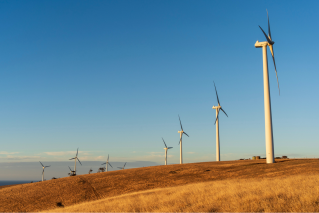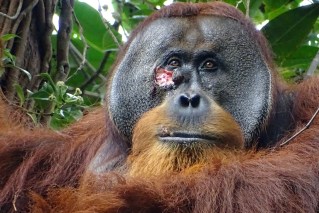Indigenous knowledge is saving surfers – and sharks too

The Joonga crew aboard the vessel that's helping to safeguard sharks, swimmers and the NSW south coast. Photo: AAP
When the crew from Joonga Land and Water Aboriginal Corporation receive a ping on their phones they don’t check Insta or TikTok, they head straight to sea, hoping to check out a shark.
The Indigenous-owned business has the SMART (Shark Management Alert in Real Time) drumline contract for the NSW south coast from Batemans Bay to Broulee.
Every day its staff take the boat out and set lines with bait (usually mullet) at first light, about 500m from shore.
When its taken, a satellite alert is triggered and sends a message to the crew, who have 30 minutes to reach the drum and get to work.
If it’s a target species – a white, bull or tiger shark – its game on. All other animals are released.
Wally Stewart, a Walbunja man from the far south coast Yuin nation, manages projects for Joonga, including the shark contract, cultural boat tours and an all-Aboriginal dive team.
The Joonga crew have all had specialist training to work safely with sharks.
“We get the shark up beside the boat, lasso it in the middle and then we roll it over and, basically, they go to sleep,” Mr Stewart says.
Catch and release
The shark response is known as tonic immobility, whereby it goes into a calm, trance-like state so pictures can be taken of its gums and teeth along with measurements and small samples to share with scientists.
This greatly reduces the risk of the animal or crew being hurt. A tag is then attached before the shark is released further out at sea.
The Department of Primary Industries (DPI) has 37 shark listening stations along the NSW coast, from Tweed Heads in the north to Pambula in the south.
If a tagged shark swims within 500m of one, information is sent via satellite to the SharkSmart app and the @NSWSharkSmart X account so beach-goers and surfers can access real-time updates.
Data from the full network of stations also provides insights into the movements of sharks.
“It’s about 10 per cent fishing and about 90 per cent science,” Mr Stewart says.
“It’s a great job for our young fellas that we trained up. Real work, important work.
“This is where they want to work for the rest of their lives. They’re sea people, sharks don’t worry them, they’ve swum with them.”
The relationship between NSW Fisheries and the south coast community hasn’t always been harmonious. It spent decades and thousands of dollars prosecuting Aboriginal fishers – and there’s still a class action in the wings.
Evironmental devastation
But, for now, the Joonga team is collaborating on projects that help the health of local marine ecosystems, including a research program on sea urchins.
Populations have exploded along the east coast in recent years and are moving further south as ocean temperatures rise.
“Everywhere we go diving, there’s nothing there anymore,” Mr Stewart says.
“We identified all these fishing sites that we’ve been fishing forever, places our parents’ fathers told us to look after, and they’re gone.
“There used to be all this kelp and plenty of lobsters. Now there’s all these sea urchins and it’s barren.”
Joonga trained up an Aboriginal dive team to work with scientists conducting underwater surveys, quantifying numbers and identifying species of sea urchin.
Later in 2024, the project will start removing urchins and see if kelp begins regrowing. A commercial sea urchin business may also be possible.
“We said ‘look, we want to get rid of some of these friggin’ sea urchins, see if we can get some of that kelp growing back’,” Mr Stewart says.
“We identified a couple of sites that mob picked out that are really significant.”
World’s largest program
The DPI says its shark management program, which also uses nets and drone patrols, is the largest in the world.
It says SMART drumlines have proven the most effective tool for catching target sharks, minimising the catch of non-target animals and maximising the survival of all animals caught on the gear.
It’s collating more than 34,000 alerts from the listening stations to create interactive maps of tagged sharks, plus using satellite data.
When a shark breaks the surface long enough to be received, the tag ‘pings’ the location via GPS.
Sharks sometimes don’t ‘ping’ for a time because they can travel vast distances; some of the tagged animals have been tracked to New Zealand, Papua New Guinea and New Caledonia.
For the Joonga crew, the day ends taking in the drumlines an hour before sunset.
“In summer it’s long days for the boys and they can sit there all day, throwing a line in to catch a snapper to share with mob,” Mr Stewart says.
“But the way the our guys are able to handle sharks is really good and they can’t wait till they get a shark on the line.”
-AAP








